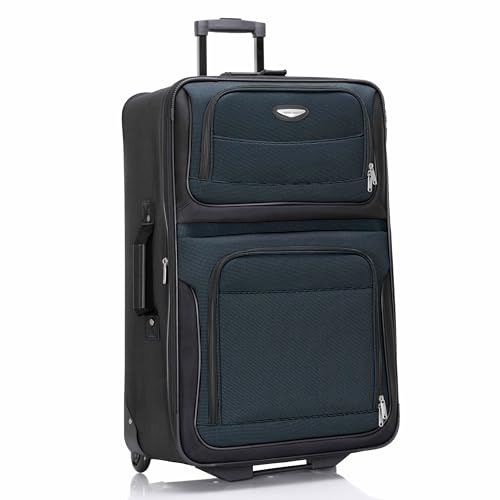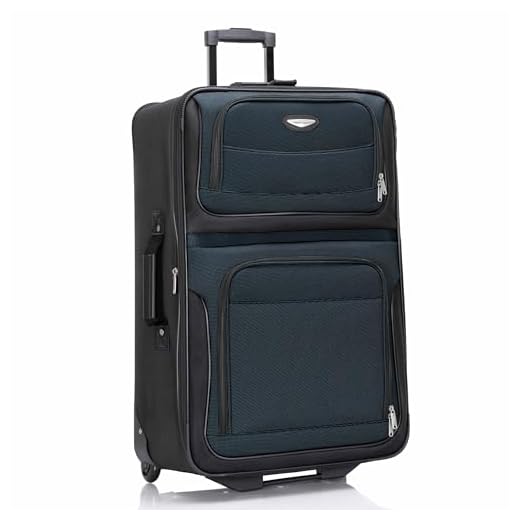



Quick rule: Present hold bags for tagging typically between 24h and 2h prior to scheduled departure. International services often close bag-drop about 4h before pushback; domestic routes usually stop acceptance near 2h; low-cost carriers commonly enforce a 40–60min cutoff; some regional feeders end acceptance at ~30min.
Practical steps at the airport: Obtain an online boarding pass, use self-service kiosks to generate bag tags and head to the bag-drop counter. Allow at least 90min for short-haul flights and 3h for long-haul when presenting bags; add extra time during peak travel days, major holidays and at large hub airports.
Exceptions and special items: oversized items, sports gear and musical instruments often require advance booking and must be handed over earlier – frequently routed via cargo or special-handling channels with deadlines such as 48h prior or separate collection windows. Priority passengers and premium cabins sometimes have dedicated counters with extended acceptance windows.
Checklist before arrival: consult the carrier’s published bag-drop timetable for the specific airport, carry booking reference and photo ID, pre-pay any excess-baggage fees online where possible, and arrive with bags tagged and ready at least within the recommended windows to avoid refusal or last-minute rebooking.
Airport counter and baggage-drop cut-off times for domestic vs international flights
Arrive at the ticket counter or baggage-drop at least 60–90 minutes before domestic departures and 120–180 minutes before international departures.
Typical cut-off windows
Domestic: most carriers close manned ticket counters and baggage-drop desks between 45–60 minutes prior to departure. Low-cost airlines and some regional operators may enforce earlier closures of 30–45 minutes. If a boarding pass was already issued online and automated bag-drop is available, expect the bag-drop gate to shut roughly 30–45 minutes before pushback.
International: full-service and long-haul carriers commonly require counter and bag-drop completion between 60–120 minutes before scheduled departure; for transcontinental or intercontinental sectors some airlines set 150–180 minutes. Automated bag-drop usually closes slightly later than the manned counter but still within a 60–90 minute window for most international flights.
Operational advice
Always verify the exact cut-off listed on the airline ticket or the airport website; if the carrier’s policy is stricter, that policy applies. Use automated bag-drop where present to save time, but allow extra time for excess-weight handling and ID/passport checks. For international itineraries allow additional time for passport control, visa checks and possible airline document checks at the counter. Passengers presenting baggage after the posted cut-off risk denied acceptance and no refund for the bag transport fee.
Online boarding pass plus early bag-drop: when to hand over hold bags before arrival
Recommendation: Complete online registration at first availability (typically 24h prior to scheduled departure) and proceed to a designated self-service bag-drop or early-drop counter as soon as the airline begins accepting hold bags; this maximises options and reduces risk of missing the bag acceptance window.
Link between online registration and early-drop
Web-based boarding pass issuance is usually the trigger for early bag acceptance at kiosks or staffed counters. Bring the mobile or printed boarding pass barcode and the booking reference; staff or kiosk printers will attach tags and issue a baggage receipt. Self-service bag-drop machines commonly require a scannable boarding pass plus payment method on file for excess-weight or oversized-item fees.
Practical rules, exceptions and checklist
– Typical availability: early-drop is often offered from the moment online registration opens up to the airline’s baggage cut-off; some major-hub carriers allow previous-evening handover for early-morning departures (example window: 12–24h before flight departure).
– Interline and ticketing: hold bag acceptance may be refused if onward segments are on separate tickets or connecting airlines lack an interline agreement; confirm with the carrier in advance.
– Documentation: passports or ID must be presented for international departures at early-drop; failure to present required ID may block acceptance.
– Security and contents: remove valuables and travel documents from hold bags; keep the baggage receipt until arrival at destination.
– If travel includes oversized, special or sport equipment, notify the airline before attempting early-drop–such items often require transfer to a staffed desk and extra processing time.
– Arrival timing: plan arrival at the early-drop area at least 30–45 minutes before the carrier’s published bag-drop deadline to allow for queues and tag processing.
Low-cost carriers and last-minute hold-baggage: typical cut-offs and penalty risks
Recommendation: arrive at the bag-drop desk at least 60 minutes before short-haul budget departures and 90–120 minutes before international budget sectors to avoid refusal to accept hold items.
-
Typical acceptance windows
Top RatedTSA-Compatible Underseat Carry-On BagRemovable wheels for easy transport optionsMaximize your travel convenience with this compact carry-on that meets airline size regulations and features a hard shell for added protection.- European low-cost operators (Ryanair, easyJet, Wizz Air): commonly 30–40 minutes prior to departure; many enforce 40 minutes as a firm cut-off at the counter.
- US budget carriers (Spirit, Frontier): typically 45–60 minutes for domestic sectors; some airports apply 45 minutes as the minimum.
- International budget sectors: most carriers require 60–120 minutes, with the tighter end applied at busy airports or for flights leaving outside normal operating hours.
-
Common penalty types and typical ranges
- Airport bag fees: on-the-spot rates usually 2–4× the online price; expect an extra $30–$100 if allowance was not purchased earlier.
- Overweight/oversize charges: frequently $50–$200 per bag depending on severity; extreme cases trigger refusal or mandatory repacking.
- Denial of acceptance: hold items presented after cut-off may be refused, forcing rebooking or gate-only solutions; re-ticketing or missed-flight costs often exceed $150.
- On-the-spot handling actions: forced removal of valuables to cabin, last-minute repacking, or separate dispatch of a bag at high carrier or courier rates.
-
Factors that increase risk of penalties
- Late airport arrival, long security or transfer queues, unfamiliar terminals.
- No pre-purchased allowance on a bare-bones fare; single-leg fares that exclude hold allowance attract steeper airport charges.
- Separate-ticket connections where the onward carrier enforces its own earlier cut-off.
-
Focused mitigations (specific, immediately actionable)
- Purchase hold allowance during booking to lock lower rates; on-the-spot purchase is substantially costlier.
- Weigh and measure hold items at home; move fragile or valuable electronics into the cabin – see are dslr cameras better than phone cameras.
- Carry a compact daybag or small messenger for urgent transfers and last-minute repacking: best messenger bag for writers.
- If arrival is close to the published cut-off, consult counter staff immediately and accept gate acceptance only after confirming exact fees and handling terms.
-
Documentation and disputes
Airline terms of carriage specify final acceptance times; keep booking confirmations, baggage receipts and timestamps to contest excessive airport charges through the carrier’s customer service or regulator if needed.
Allocate an extra 90–180 minutes for connections involving oversized or special-handled baggage; for international transfers requiring customs re-clearance or untagged interline moves, allocate 180–240 minutes.
Same-carrier through-tagging generally reduces required extra time to 30–60 minutes since items remain within one handling system; self-transfer or different carriers that force manual re-drop and full security re-screening require an additional 90–240 minutes. Surface transfers between terminals add a minimum 60 minutes for short transfers and 120–180 minutes at major hubs.
Oversize and weight thresholds, fees and processing
Most carriers classify items whose linear dimensions exceed 158 cm as oversized; common weight breakpoints are 23 kg (50 lb) for economy and 32 kg (70 lb) for higher classes. Domestic extra-size fees typically range $50–$150; long-haul or intercontinental oversize/weight charges commonly range $100–$500. Fragile or non-standard items frequently get redirected to air cargo, which adds processing time and may delay shipment by 24–72 hours or more.
Sports gear, instruments, pets and hazardous items – lead times and handling notes
Sports equipment (bicycles, skis, surfboards): notify carrier at least 2 days for domestic travel and 3–5 days for international routes; disassemble per airline packing requirements and expect an extra 60–120 minutes at the passenger counter or 120–240 minutes if processed through a cargo terminal. Musical instruments: reserve gate-stowage or seat space in advance and add 60–90 minutes to standard processing; oversized instruments often must travel as cargo with separate drop-off windows.
Pets and live animals: in-cabin pet bookings usually require 24–72 hrs advance notice; international movements need vet certificates, permits and health tests that take 2–30 days to obtain. Cargo kennels involve separate drop-off and customs clearance – allow an additional 120–360 minutes for handling plus clearance on arrival. Hazardous materials: many DG items are forbidden in passenger operations and must be pre-booked via cargo, typically with at least two days’ lead time; undeclared items will be refused and may incur fines.
Operational checklist: request through-tagging at booking; confirm special-handling codes (WXL, OVRS, EXST, PER) on the reservation; photograph packed items and keep receipts and permits with travel documents; attach visible fragile and orientation labels; present paperwork at the drop desk rather than at gate when special handling is involved. For outdoor transfers or exposed loading areas, protect cases with waterproof covers and a compact umbrella such as best sturdy umbrella compact to avoid moisture-related damage.








